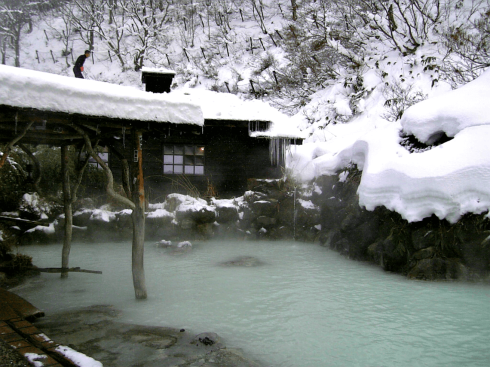Continuing from the part 3.
5.3. Results: slowing down the trend or trend reversal?
Some work, especially on the local level, have been successful in reversing the trend. Hokkaido targeted the retirees as potential in-migrators to the countryside. According to a questionnaire in Tokyo, 80% of the respondents had interest in living in Hokkaido and 70% of them wanted rural living instead of cities (Murakami et al., 2009). This would bring a net economic profit to the region even when the costs of increasing social security costs are counted. Initial testing period showed several hundred people from Tokyo spending extensive time in Hokkaido and benefitting the local industry (Murakami et al., 2009). Unfortunately, these kinds of successes are far and few between on the national scale.
The inevitability of overall population decline in Japan can’t most probably be reversed for a long time (Kato, 2014). Thus, one option might be to abandon the ideal of complete countryside revival and take more pragmatic approach. The rural communities could be evaluated and revitalization efforts concentrated on the most viable candidates. The worse off locations would be deemed unsustainable in the long run. The decline of these places would be managed in a controlled manner focusing on the wellbeing of the inhabitants until the eventual closure of the services and merging into larger administrative units (Feldhoff, 2013).
6. Discussion
Most of the effects presented in this thesis I have personally observed in Akita prefecture and other locations around Tohoku area. The urban decay of abandoned housing and commercial buildings could be seen already in mid-sized cities and even more so in small villages. Akita city as the prefectural capital is most untouched by the trend. Additionally, some rural villages have managed to retain their viability due to extensive tourism to the nationally famous onsen hot springs, i.e. Nyuto-onsen in northern Akita.

The agriculture has started to form larger more efficient units in Akita prefecture, but large amount of farming is still done in small scale. And these small farms are all tended by visibly elderly people with no young farming generation in sight. Consolidation of small scale farming into larger companies, would no doubt increase the efficiency and economic success. In the current global economy, efficiency is the key and small scale agriculture is no longer economically sound in regards of staple foods like rice. Finland, for example, has moved to large scale agriculture with crops, dairy products, eggs and other staples, produced and processes in larger units. Smaller scale might work with specialized or very high quality products where the profit margins don’t depend on the produced quantity. In case of Akita, suitable industries for these are sake brewing and possibly more processed local foodstuffs, like iburi gakko pickles.
Efficiency in general seems to be lacking in rural industry and also public services. Focusing on fewer key areas may keep at least one part of the industry viable. Likewise, I have personally witnessed the crass inefficiencies of the local bureaucracy in Akita and other parts of Japan. The use of paper documents and fax machines for information storage and communication is astounding in the era of IT, when web portal and electronic database would cut the costs dramatically. The new ‘My number’ system may someday offer more convenience and efficiency. Basic social security number system and electronic records have been very successful in Finland for decades, in comparison.
The capacity of people to find the best solutions to problems should not be underestimated. If the top down bureaucracy and control is reduced and the local communities are allowed to use their strengths, revitalization of the countryside is possible. Education and long term structural changes are the key. The citizens could be educated locally to the problems their economy is facing, possibly bringing forth creative solutions. Temporary patching from the central government in form of poorly targeted monetary support or unnecessary infrastructure projects can’t bring fundamental improvement.
7. Conclusions
This paper tried to show the historical background, the future prospects, reasons and possible solutions to the difficult problem of population deflation in rural northern Japan. Problems of this scale are the combination on several aspects; economical, sociological and political. Detailed examination of individual portions is out of scope of this work, but general overview on the matter is provided. The viability of the community is mostly dependent on the local economy, which in turn is tied to economy of the whole nation. Thus the rural exodus needs to be considered from a wide perspective even though the harsh reality is faced at the local level by the residents.
References
Abe, M and Souichi, O. ”Fluctuations in unemployment and industry labor markets.” Journal of the Japanese and International Economies 15.4 (2001): 437-464.
Anderson, D., et al. “Is Japan’s Population Aging Deflationary?” No. 14-139. International Monetary Fund, 2014.
Feldhoff, T. ”Shrinking communities in Japan: Community ownership of assets as a development potential for rural Japan?.” Urban Design International 18.1 (2013): 99-109.
Hu, E. “Will More Day Care Help Boost Japan’s Sluggish Economy?” Parallels, January 5, (2016).
Japan Times. “Japan’s fertility rate rose slightly last year, but deaths were also up” 2016. http://www.japantimes.co.jp/news/2016/05/23/national/japans-fertility-rate-rose-slightly-last-year-deaths-also/#.WQb0P8YlH8A
Johnston, E. “Is Japan becoming extinct? The projected drop in the country’s population raises some fundamental questions about its political and social future.” The Japan Times, May 16, (2015).
Kato, H. ”Declining Population and the Revitalization of Local Regions in Japan.” Meiji Journal of Political Science and Economics, 3, (2014).
Kiyota, T. “Japan Faces Massive Demographic Decline: Could ”Womenomics” Help?” The Buzz, January 27, (2015).
McCurry, J. “Japanese women suffer widespread ’maternity harassment’ at work.” The Guardian, November 18, (2015).
Menju, T. “Can Japan Welcome Immigrants? A Shrinking Population Spurs a Growing Debate.” Civil Society Monitor, (2014).
Murakami, K., et al. ”Planning for the ageing countryside in Japan: The potential impact of multi-habitation.” Planning Practice & Research 24.3 (2009): 285-299.
NIPSSR: National Institute of Population and Social Security Research. “Population Statistics.” 2012. http://www.ipss.go.jp/p-info/e/Population Statistics.asp
Nikkei News data, 2017. http://www.nikkei.com/edit/interactive/population2014/map.html#!/city=36.56260003738545,116.8505859375/dataset=sou_women_ratio/z=6/mode=/
Rausch, A. ”Tensions in Chihō Sōsei, 2015: Local Realities, National Policies and International Agreements.” http://www.academia.edu/19225445/Tensions_in_Chiho_Sosei_Local_National_and_International
Searchinger, T., et al. ”Achieving Replacement Level Fertility.” World Resources Institute working paper, Instalment 3 (2013).
Smil, V. ”The Unprecedented Shift in Japan’s Population: Numbers Age, and Prospects.” Japan Focus posted on April 19 (2007).
United Nations Department of Economic and Social Affairs and Population Division. ”World Population Prospects: The 2015 Revision, Key Findings and Advance Tables.” https://esa.un.org/unpd/wpp/Publications/Files/Key_Findings_WPP_2015.pdf
Uwasu, M, et al. ”An Integrated Approach to Visioning for Peripheral Farming Villages: A Case Study of Japan.” Journal of Sustainable Development 8.2 (2015): 282.
Yoshida, R. “Vanishing communities find themselves facing shortage of leaders.” The Japan Times, April 24, (2015).













3 vastausta to “Problems of Emptying Countryside in Northern Japan (miniseries part 4, final)”